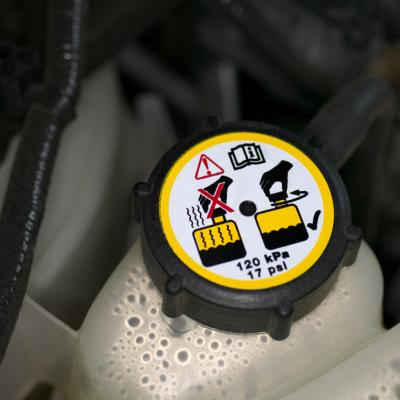
Next to its oil supply, your car engine’s coolant is one of the most important fluids that the motor relies on to stay running reliably. Coolant is circulated from the radiator to the engine’s water jackets, where it ensures that the engine block stays cool, as well as to the heater core, where it is responsible for providing heat to the vehicle’s occupants. A leak in the cooling system can also be hard to track down since the coolant travels through so many passages.
Check the radiator coolant level. Unscrew the radiator cap if your car has one and check the coolant level visually. If it is low, top it off with high quality coolant.
Check the level of the coolant reservoir. Many cars do not have a radiator cap and instead use a remote reservoir with a coolant line that goes to the radiator. Check the level of the reservoir to make sure it is to the full mark.
Open the oil cap and check for residue from oil and coolant mixing. If there is a coolant leak that is allowing coolant to get into the motor, then there will be a milky, brownish oil residue left on the inside of the oil cap. This is caused by the motor oil and the coolant mixing.
Inspect the radiator coolant hoses, the hoses that go to the heater core, as well as the heater core, for leaks. You may need to jack up the vehicle to see if any of the coolant hoses are leaking. If the heater core is leaking, it may be leaking into the interior of the car since most heater cores are located inside the dashboard. Check to see if the carpeting is damp in the foot wells or if there are any visible leaks under the dash.
Inspect the thermostat housing for leaks, which is usually located on the engine’s head near the top radiator hose. Also inspect the area around the water pump for any coolant leakage.
Have the coolant system pressure tested. Taking the car to a professional radiator shop is another good way to find out about coolant leaks. The shop will perform a pressure test on the cooling system to see if and where it is leaking.